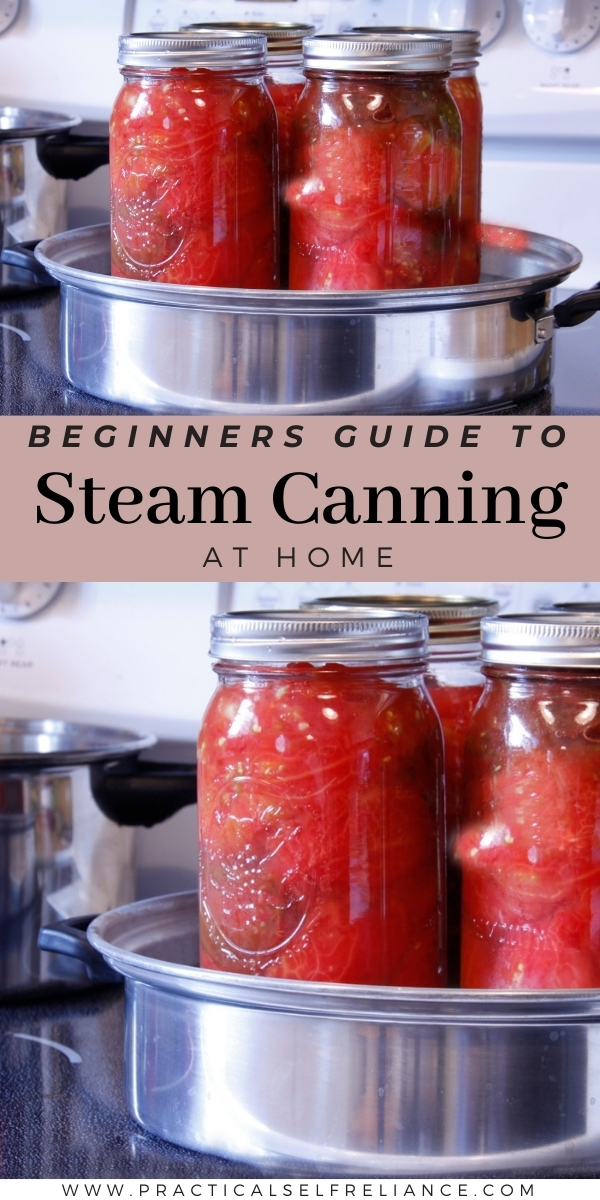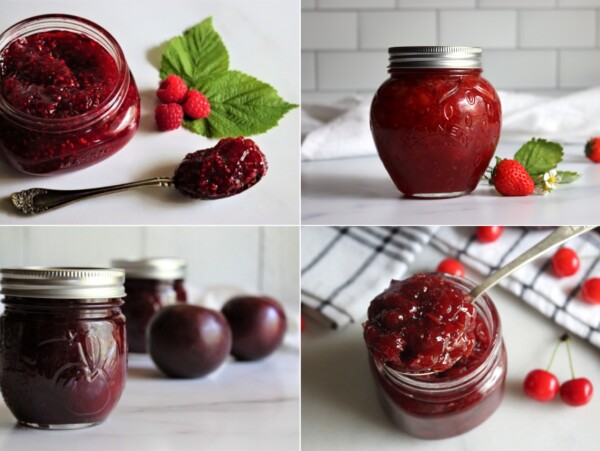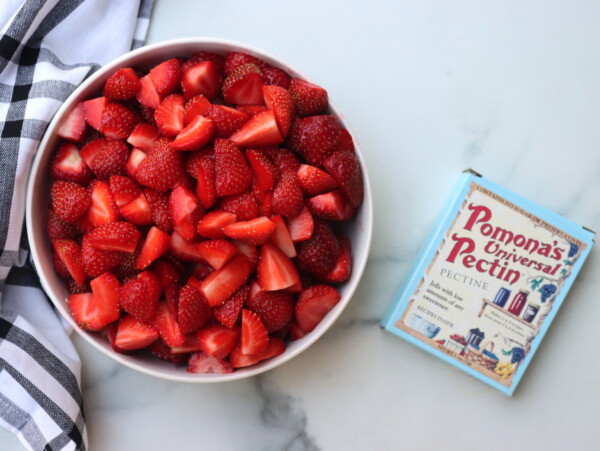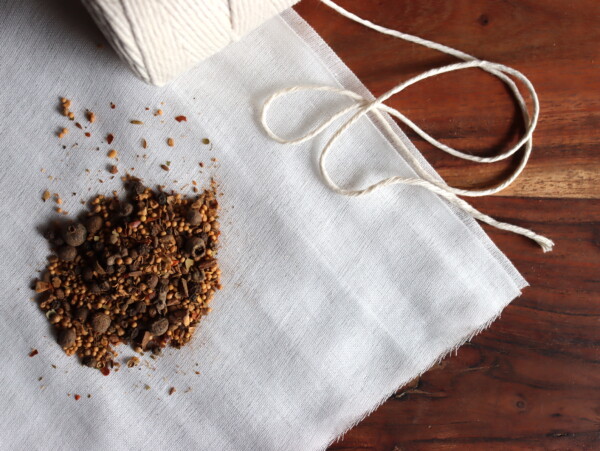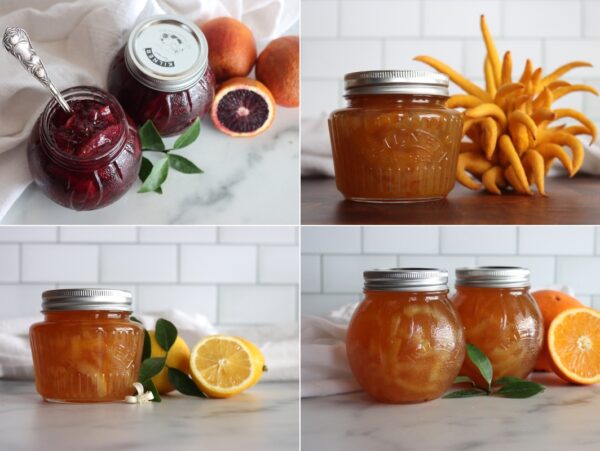This post may contain affiliate links. Please see our disclosure policy.
Steam canning is a quicker way to preserve food at home than standard water bath canning. The steam canner takes less time to come up to temperature than a full pot of water, and requires less energy to keep hot than gallons of water in a water bath. It heats up the house less too!

This article is written by Morgan Hyde, a former reference librarian from Arizona. Working for the library refined her passion for learning and deep research—a passion that began in her rural AZ upbringing and continues in her work as a writer and editor. If it’s something she can do on her own, it’s something wants know about.
Steam canning is the fastest way for you to preserve fresh food for long periods of time. While it isn’t suited for everything, it’s an effective way to store jams, jellies, pickles and salsas!
History of Steam Canning
At-home canning has been around for almost 150 years. Steam canning, not so much.
The original steam canner was produced in the 1920s, but the practice was discontinued in the 1970s due to major safety concerns. Researchers at the time weren’t equipped to confidently say steam canning was a perfectly safe method. And with botulism cases on the rise (primarily caused by poor canning practices), many people turned to what were considered safer methods.
It wasn’t until 2011 that research into steam canning began again. And 4 years later, steam canning was given the green light for at-home use.
To this day you can still find the concerns of the 1970s parroted online: cold spots might form inside the dome, it’s easy to confuse cool steam for vapor, or the steam could cause burns.
But if you’re willing to be patient, follow tested recipes to the letter, and prepare ahead of time, you’ll be able to safely enjoy steam-canned foods.
What is Steam Canning?
Steam canning is a method of creating shelf-stable foods that can be stored at room temperature for long periods of time. How long? Technically forever, but most people try to eat their canned goodies within a year to get the food’s full nutritional benefit (and better taste!).
To steam can food, you’ll fill up glass jars and cover them with a 2-part lid. Then you’ll place the jars in an enclosed steamer where the heat will pasteurize the food. As the jars cool down from the heat, the 2-part lid will create a vacuum seal on your food.
If that sounds similar to water bath canning, it is! Both methods follow the same principles and can be used for high-acidity foods. The main difference is that steam canning is significantly faster. Because it’s faster, it requires much less water and energy (making it a bit cheaper in the long run). I’d recommend reading through how to water bath can as a complement to steam canning.
When choosing a method to use, time should be your first concern: how much do you have and how long does the recipe call for? Recipes that call for more than 45 minutes of processing time are better suited to water bath canning as steam canners may run out of water if used for too long.
Which Foods are Safe for Steam Canning?
Like with water bath canning, steam canning is approved for high-acidity foods with a pH below 4.6.
Always remember—just because something seems acidic doesn’t mean it’s acidic enough for steam canning. Modern tomatoes are no longer acidic enough for steam canning and will need to be pressure canned or have acidity added to them.
Things become more complicated in recipes that blend high and low acidic foods. Always choose recipes that have been thoroughly tested and follow them carefully.
Foods you can steam can:
- Fruit
- Berries
- Pickles
- Pie Fillings
- Preserves
- Jellies
- Fruit Jams
- Fruit Butters
- Sauces
- Vinaigrette Dressings
- Juices
- Clear Jel (as a substitute for other thickening agents)
Foods Not Approved for Steam Canning
Certain foods aren’t good for steam canning by themselves and will affect the pH of any recipes you add them to. Many people online claim to have “work arounds” to these limitations. It’s not a good idea to try alternate methods or recipes, especially as a beginner—stick to what you can find through the National Center for Home Food Preservation, or state university extensions.
While some items on this list can be pressure canned instead or be combined with an acid, some are generally advised against for home preservation at all. Starch and thickeners, for example, can inhibit heat transfer and prevent foods from getting hot enough to pasteurize.
Foods you shouldn’t steam can:
- Melons
- Bananas
- Avocados
- Asian Pears
- White Peaches
- Meats
- Seafood
- Poultry
- Dry Beans
- Vegetables (non-pickled)
- Dairy
- Eggs
- Oil
- Starch (noodles, potatoes, rice, etc.)
Equipment for Steam Canning
Before you start steam canning, you’ll need a steam canner (obviously). But there are a few other tools you’ll want to get started:
- Canning Jars: there’s a few different styles you can go for. But make sure your jars are fitted for 2-part canning lids and are rated to take high heat. Glass pickle jars, sadly, can’t be reused for canning.
- Canning Lids: these come in 2 parts. The first part is a ring that spins around the mouth. The other is the lid itself, a flat disk with a thin rubber gasket underneath. Lids are single use and should be tossed after opening to ensure a good seal. Keep your rings!
- A Steam Canner: 2 styles of steam canners are available today. One is the classic design with a shallow bottom and a tall dome (only useful as a steam canner). The other style can also be used for water bath canning. Whichever style you choose, look for a pot with a temperature reader on its lid.
- Jar Lifter: steam canners use less water and your jars won’t be submerged like with water bath canning. All the same, I’d recommend this tool—you’ll still be moving jars in and out of boiling water, why not make it easy on yourself?
- Canning Funnel: any funnel could work, but canning funnels have a wide mouth that let large pickle spears slip cleanly into your jars. Some even measure headspace while you pour! Seriously, food spilling onto your jar rims and compromising your seals isn’t worth passing this tool over.
Optional equipment for steam canning
Many canning kits pack in more tools than you really need. While some are useful, you probably can get by without them:
- Canning Rack: most steam canners come with a flat canning rack to keep your jars from touching the pot. If yours doesn’t, don’t run to the store—check first if your pot has a 1/2in thick bottom made of bonded metal. You’ll need a canning rack in thin-bottomed pots, but can always make one for yourself if needed.
- Headspace Measure: thin, small, easy to lose or break, this isn’t worth it. Especially if your canning funnel has one built in.
- Bubble Remover: often pitched as a combination bubble remover/headspace measure. A spoon or knife can remove excess air from your food just as easily.
- Magnetic Lid Lifter: you might come across recommendations to simmer your lids before use. While not entirely necessary, if you choose to boil your lids, a magnetic lid lifter makes it easy to move the lid from boiling water to jar.
- Jar Wrench: once you’re done canning, the ring part of the canning lids will come off. You shouldn’t be tightening the rings enough to make it difficult to remove them. But if you did, or want a little extra grip, a jar wrench can be helpful.
- Bottle Brushes: likely you already have one or two bottle brushes in your house. There’s nothing special about what comes in the kits and a normal dish sponge will work just as well.
Steam Canning Basics
Begin by grabbing your jars and give them a quick visual inspection—check for cracks, chips, dried on food, or anything that might spoil the canning process. Even if your jars look clean, you may want to give them one last wipe-down.
Set your steam canner on the stove and fill the bottom half with water. How much water will depend on your model (so read your manual), but it’s often around 3 quarts. Adding a splash of vinegar to the water will help prevent scaling in areas with hard water.
If using a canning rack, improvised trivet, or cotton towel, set it in the steamer now. Add your jars in and begin heating up the water, but don’t aim for a full boil yet.
For hot packing your jars (meaning the contents will be partially cooked first), bring the water up to 180⁰F. For cold packing, you’ll need to aim lower at 140⁰F. These hot-but-not-boiling temperatures are required to help slowly warm up your jars. Raising the temperature of glass too quickly can cause thermal shock and your canning jars may shatter.
While the water is warming, take your canning funnel and pour your food into the jars, leaving the required amount of headspace at the top. Your recipe should indicate how much headspace to leave, anywhere from 1/4in to 1in. Headspace is necessary for forming your seal correctly, so don’t cut any corners here.
Avoid splashing anything onto the rim of your jars! I’d recommend wiping down the rims with a clean, dry dishcloth after you’ve filled them—any food or water left behind can potentially prevent your jars from sealing.
Place your lids on the jars and finger-tighten the rings over them. Using your jar lifter, lower each jar into the steamer, keeping them as upright as possible. Don’t cram the jars in—add as many as you can without letting them touch.
Cover your steamer, turn up the heat, and set your timer once the temp gauge on your lid indicates you have a full head of steam (212⁰F at sea level). Many gauges will have indicators that show the appropriate temperature for your elevation. Cross-check your manual with the recipe if you’re not sure.
Try to avoid cranking your heat up to the highest temperature available. In most cases, this is more heat than you need and you’ll lose steam faster (meaning less potential processing time). As you practice you’ll come to know what the right temperature setting is for your stove.
Don’t open your steamer prior to reaching your required processing time. You’ll lose your head of steam and will need to restart your processing time once it’s built up again.
When the timer rings, turn off the heat and move your steam canner off the burner (if you can do so safely). Leave the dome alone for now and wait 5 minutes for the canner to cool down a bit. This will help avoid thermal shock from the cans cooling too quickly and allow some of that hot steam to dissipate.
Grab some oven mitts and carefully take the dome off, angling it away from your face and arms. There likely will be a rush of hot steam and the dome will have hot water dripping from it. Set it somewhere safe and out of the way (the sink is a great option).
Carefully lift the jars out and set them somewhere without drafts. They’ll still be hot and you should avoid handling them while they cool. Be extra careful to avoid tilting them—their seal is forming. Leave about 1in of space between each jar to allow them adequate airflow.
Now you need to play the waiting game. You’ll want to leave the jars alone for 12-24 hours until they’re room temperature. Don’t play with the lids by testing their seal, pressing on them, or adjusting the rings (while they’re still warm or you’ll get a false seal).
After the jars are fully cool, you can test the seal by pressing down on the lids. A properly sealed lid won’t move at all. Lids that pop down and back up aren’t sealed and won’t be shelf-stable.
If you have some jars that didn’t seal, don’t panic! You can set them in the fridge and enjoy them as you would any other leftover. Alternatively, you can always grab new lids and try canning those jars again.
For your sealed jars, grab a marker and write the contents and the date they were processed on the lids. They’re single-use after all. Remove the rings and set them aside for later use. Leaving the rings on your jars may result in the rings rusting onto the cans or growing mold from any food scraps on them. Rings don’t form the seal and aren’t needed once you’re done canning.
Set your jars somewhere cool, dry, and dark. Enjoy them throughout the year!
Adapting Water Bath Canning Recipes
You’ll notice as you get into steam canning that there aren’t many recipes that call for steam canning.
This is partially due to the uncertain history of steam canning. But mostly it boils down to that you don’t need steam-canning specific recipes.
I’d recommend searching for tested water-bath recipes since there are more of them. You don’t have to change anything about these recipes to process them in a steam canner. The headspace, processing time, and acidity requirements will be the same.
All you’ll need to do is swap out the boiling water temperature for the steam temperature instead. Easy as that!
Common Beginner Mistakes
Most problems you’ll encounter with steam canning can be solved by preparing your materials ahead of time and staying calm. But there’s a few pitfalls beginners tend to fall into:
Not calibrating your steam gauge
Not all steam canners will require this step. But if your manual indicates you need to calibrate your steam gauge, follow its instructions to the letter.
It’s imperative you know how hot your steam is to make sure it will properly pasteurize your food.
Breaking your steam gauge
Unfortunately, it’s rather common for steam gauges to break or become mis-aligned. Whether it’s a bump from being tossed into a drawer, or attempting to manually adjust a gauge that doesn’t need calibration—your gauge may never get up to temperature or get there far too fast.
Most manuals will include a help number from the manufacturer. If you suspect your gauge is broken, give that number a call.
Not using the right method
Steam and water bath methods are excellent and safe ways to can food. But you should never use these methods to can low-acidity foods. You’ll run the risk of allowing botulism or other bacteria to thrive in your jars.
Similarly, you can’t safely pressure-can all foods. Recipes written for jams, pickles, and chutneys include processing times for water bath canning. You won’t be able to easily find how long these foods will need to be processed for safe pressure canning. (And you likely won’t want to—pressure canning turns these recipes into completely unappetizing mush).
Overfilling and underfilling jars
Pay careful attention to the headspace requirements of your recipes. Too little and you’ll run the risk of leaving air inside your jars. Too much and your food may leak out of the lids, preventing any possibility of a seal.
Not accounting for elevation
Water boils at different temperatures depending on your elevation. Which means your steam won’t initially be as hot at higher elevations as it would be at sea level.
If you aren’t completely sure you’re steaming your jars at a high enough temperature, you can’t be sure the food inside will be properly pasteurized and sealed. Pay careful attention to your recipe and to your steam canner’s manual.
Amending recipes
Tested recipes are considered safe for a reason. Unless you’re very confident in your knowledge of chemistry and your ability to test the pH of a recipe, don’t add or remove anything from trusted canning recipes.
Adding starches (apart from Clear Jel) will inhibit heat transfer in your jars. Removing acidic foods or adding non-acidic foods may raise the pH.
If you amend a recipe, you may need to plan on boiling the contents for 10 minutes before consuming.
Oven canning
Once considered a safe canning practice, oven canning hasn’t been a commonly used method for over 75 years.
There aren’t any safe guidelines available for oven canning. Additionally, canning jars aren’t able to handle oven temperatures and are more likely to explode while processing.
Ovens also have a higher amount of variation between models than steam or water bath canners. This makes it extremely difficult to pin-point safe, universal methods.
Using too much steam
As stated in the instructions, keeping your steam canner at a higher temperature than necessary will cause you to lose a lot of water. Losing water too fast may mean you can’t keep your jars at a high enough heat long enough to process fully. If you have to open the dome to add hot water, you’ll need to wait until you build a full head of steam and begin the process over again.
